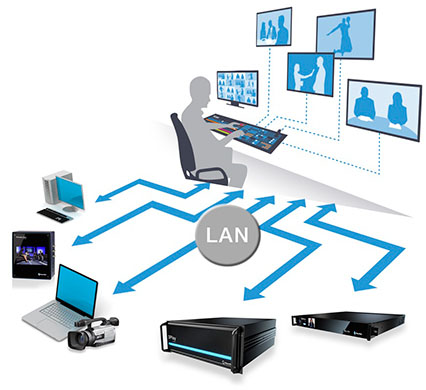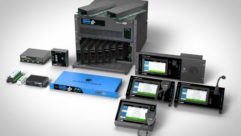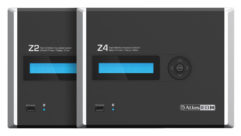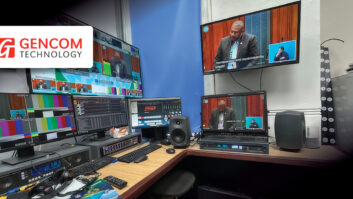
By Matthew Allard, NewTek
Streaming video has moved from being a core competency of “traditional” broadcasters to become a key offering for marketing, human resources, and brand-critical communication departments. Video—especially live video—is becoming an expectation among customers of all types: from live events to houses of worship to corporate brands.
For professionals working in the AV space, there is now a demand to offer solutions that can quickly transfer video content internally, potentially deliver it out of a facility, and do it in a way that is cost effective and requires minimal training.
This demand is being met today because IP infrastructure has become commonplace. IP is a mature, existing technology, representing a known commodity and is in use every minute of the day. Enormous amounts of prior development have gone into ensuring that IP can efficiently handle all relevant data types including those of interest to media. IP permits working in the protocols, formats, and data types that suit current needs, yet remains open to standards being extended, merged, or otherwise adapted in the future
That said, the correct protocols are necessary to ensure video signals transfer effectively and efficiently. Interoperability is always a consideration, as is the ability to work over existing infrastructure without special hardware and with existing software applications, computer platforms, and network infrastructures to acquire, store and deliver video, audio, and data streams. How can applications, converters, cameras, monitors, and other AV over IP products work together quickly and easily? And how can designers frame the value and practicality of IP video to an end user? Here are a few value propositions that resonate with end users when discussing AV Over IP.
Wireless Capabilities: Video signals have proven effective even in limited bandwidth scenarios, such as wireless connections or large-scale networks throttled through the public Internet. A real-life example of this is the story seen at the nation’s largest fishing tournaments. Fishing enthusiasts want to see live video, but how do you transfer a signal from a small boat? The solution is to send the video over cellular transmitters to the cloud, then to a central mixing studio located across state lines and, sometimes, across time zones.
While this is an extreme example, consider the implications: no business campus or corporate facility setup is too far afield for video integration—be it in-house video delivery or complete digital media production. One integrator set up a live stream from multiple points in a hotel in Rio, to airport signage in the United States to highlight the sunny Brazilian days to winter travelers. The multiple points of video were enabled by connecting to a local wireless network.
Third Party Integration: A format that is already well integrated with third parties and royalty-free can be important to end users, who may have preferred hardware vendors. As an example, Sony, Panasonic, PTZ Optics, Lumens and others manufacture NDI-native cameras for use in any environment. This means educational organizations can cover lectures and content capture using Panopto and Mediasite. Religious organizations can cover services and other events with Easy Worship, Renewed Vision, and ProPresenter. Business and enterprise organizations already use NDI for teleconferencing and real-time presence with Skype, Zoom, Hangouts, and many others. Governmental organizations can hold meetings, training sessions, and conferences with MultiCam Systems. Many organizations of different types use NDI for live event productions. NDI also supports non-traditional live events such as Resolume for music concerts and Dataton for projection mapping and animation.
No Render Playout: One unique use of NDI comes on the production side. Those editing video in Adobe Premiere no longer have to contend with rendering times for a video to be “sendable.” Anyone in the chain of approvals can view a project in creation from anywhere on a network. No more file transfers. This also means video can be prepped in a semi-live playout environment. The post-production can still take place after recording, but with no need to render a project, the video can simply be played – either internally for HR and team-based projects, or externally to customers.
As a systems designer, the first step to offering IP video solutions to clients is to understand that live video is a transformational technology. It changes an organization’s ability to spread its message, connect with new and established audiences, and build a brand identity.
To ensure clients are receiving the best information on how to achieve this, reach out to manufacturers working in the space. That’s crucial not only to integrating systems, but also in selling solutions that integrate more deeply with a business across all its key functions.
Matthew Allard is Product Marketing Manager, NewTek










